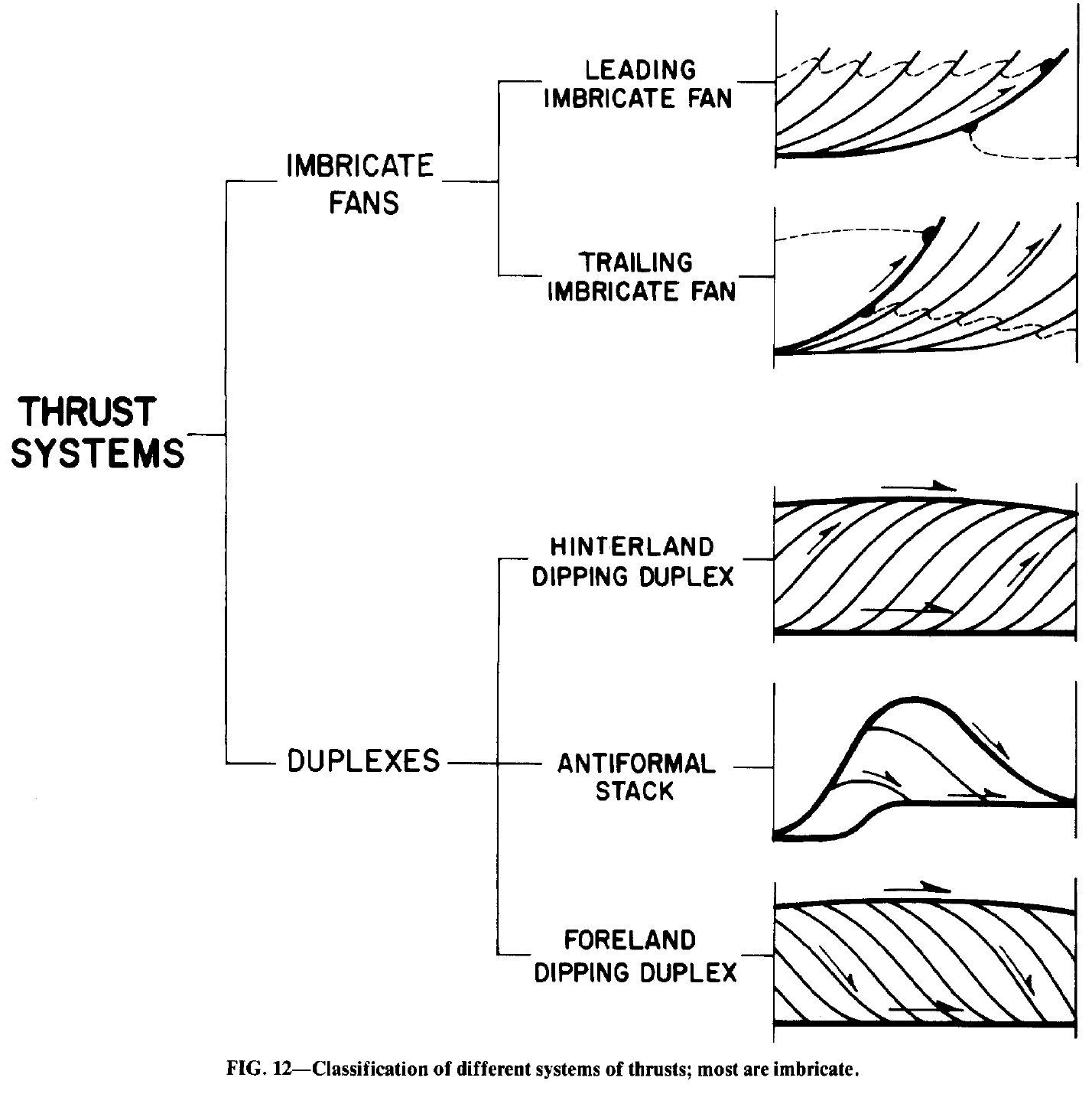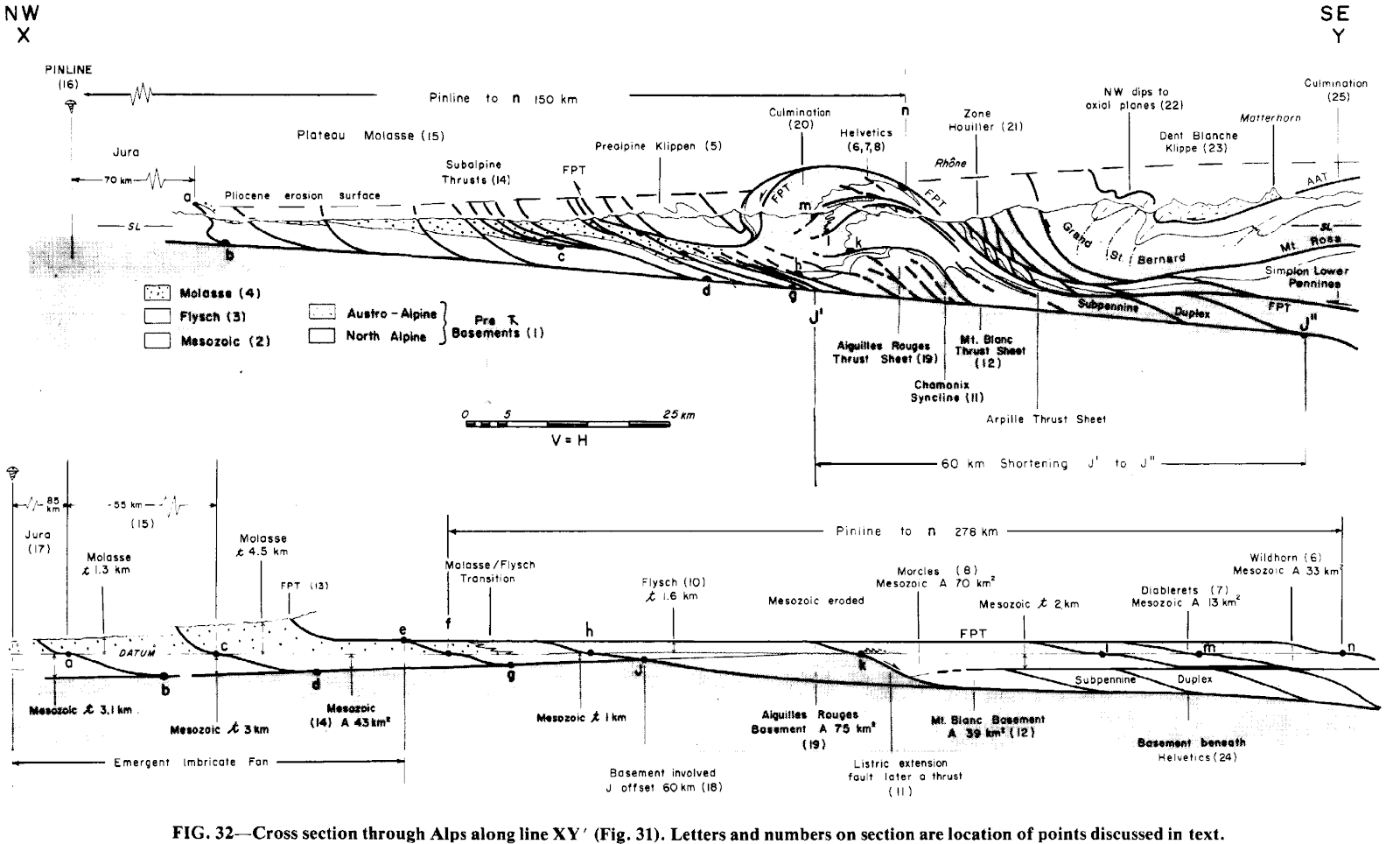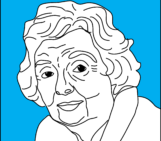
The now-classic paper of Boyer & Elliott (1982) presented a novel and general geometric framework to study thrust systems. The framework describes thrust surfaces by lines of contact between thrusts, or branch lines, and lines of thrust termination, or tip lines, and examines how they join into imbricate fans or duplexes. The framework allows accurate and succinct descriptions of the geometry of thrust systems and orogens that lead to plane-strain restorable (balanced) cross-sections (Dahlstrom, 1969).
Boyer and Elliott went a long way to define thrust systems and derived structures on the basis of their novel geometric framework. These definitions may now be considered textbook material, and include the concepts of thrust sheets, thrust splays, imbricate thrust systems, horses, duplexes, and many more. The authors reassessed existing data along several geologic transects describing the interconnection and relationships among thrust faults as defined in their framework. They derived new cross-sections through two thrust windows, and relevantly, through the southern Appalachians and the Western Alps. The new cross-sections improve previous interpretations of data; they can now be plane-strain balanced back to their pre-deformation state. With these new cross-sections, the authors resolved the growth-sequence of thrust systems in some natural examples where the sense of motion seems to change along the transport direction. This in turn allowed Boyer and Elliott to infer that thrust systems develop in a forward progression sequence towards the foreland. Usage of the geometric framework led organically to the new, balanced cross-sections and derived inferences, and thus proved the usefulness of the novel thrust belt analysis proposed.

From Boyer & Elliott (1982) – A classification of thrust systems
The authors defended as well that the correct determination of thrust systems is key to untangling plate-tectonic systems. This is due to two main reasons. The first reason is that the time-sequence of growth and type of thrusts result in the particular geometry of each thrust system, which in turn leads to distinctive patterns in map view. The second reason is the linkage that exists between the dominant thrust sheets and plate tectonic boundaries. A simple example is the development of a basal thrust at the front of deformation in subduction trenches, and the relevant control that this prime thrust has on the imbrication of the thrust system behind and above it.

From Boyer & Elliott (1982) – Possibly the first restorable cross-section through the Western Alps
This contribution consolidated a geometric basis for research on fold-and-thrust systems. Together with the mechanical basis provided by Davis and co-authors just five months later, the work by Boyer and Elliott led to a model that generalized the geometry and mechanics of tectonic systems under accretion. Commonly known as the critical taper model, this relevant (then) new model for the analysis of compressional systems was later synthesized in a review paper by Dahlen (1990).
The discussion revolved around the current validity of the definitions of thrust systems, the quality and usefulness of the figures, and the relevancy of the inferences derived by the geometric framework presented. Utsav Mannu and Matty Mookerjee commented in the discussion how fundamental the contribution is for research in regions under compression and thrusting, and Matty shares that he uses the figures in one of his courses. David Fernández-Blanco sees value in the geometric framework as it allows former surficial data to be now integrated into cross-sections that are plane-strain restorable. He also enjoys the links Boyer and Elliott did between thrust systems, plate tectonics, and crystal deformation.
Written by David Fernández-Blanco, Marta Marchegiano, Utsav Mannu and the Must Read team
References
Boyer, S.E., Elliott, D., 1982. Thrust systems. AAPG Bulletin 66, 1196–1230. https://doi.org/10.1306/03B5A77D-16D1-11D7-8645000102C1865D
Dahlen, F.A., 1990. Critical taper model of fold-and-thrust belts and accretionary wedges. Annu. Rev. Earth Planet. Sci. 18, 55–99. https://doi.org/10.1146/annurev.ea.18.050190.000415
Dahlstrom, C.D.A., 1969. Balanced cross sections. Canadian Journal of Earth Sciences 6, 743–757. https://doi.org/10.1139/e69-069



